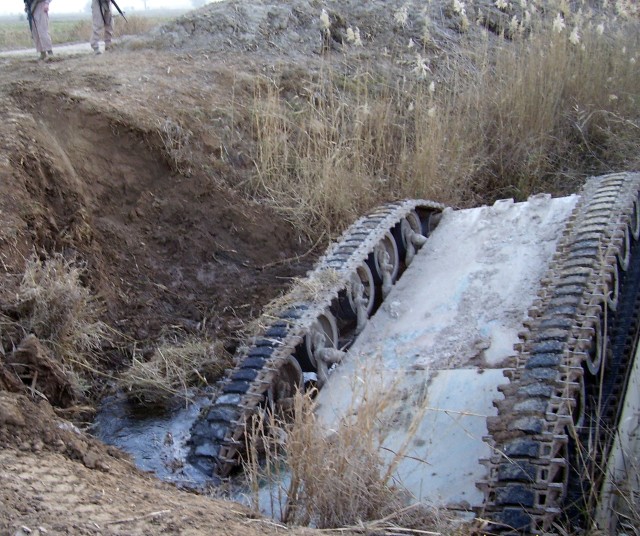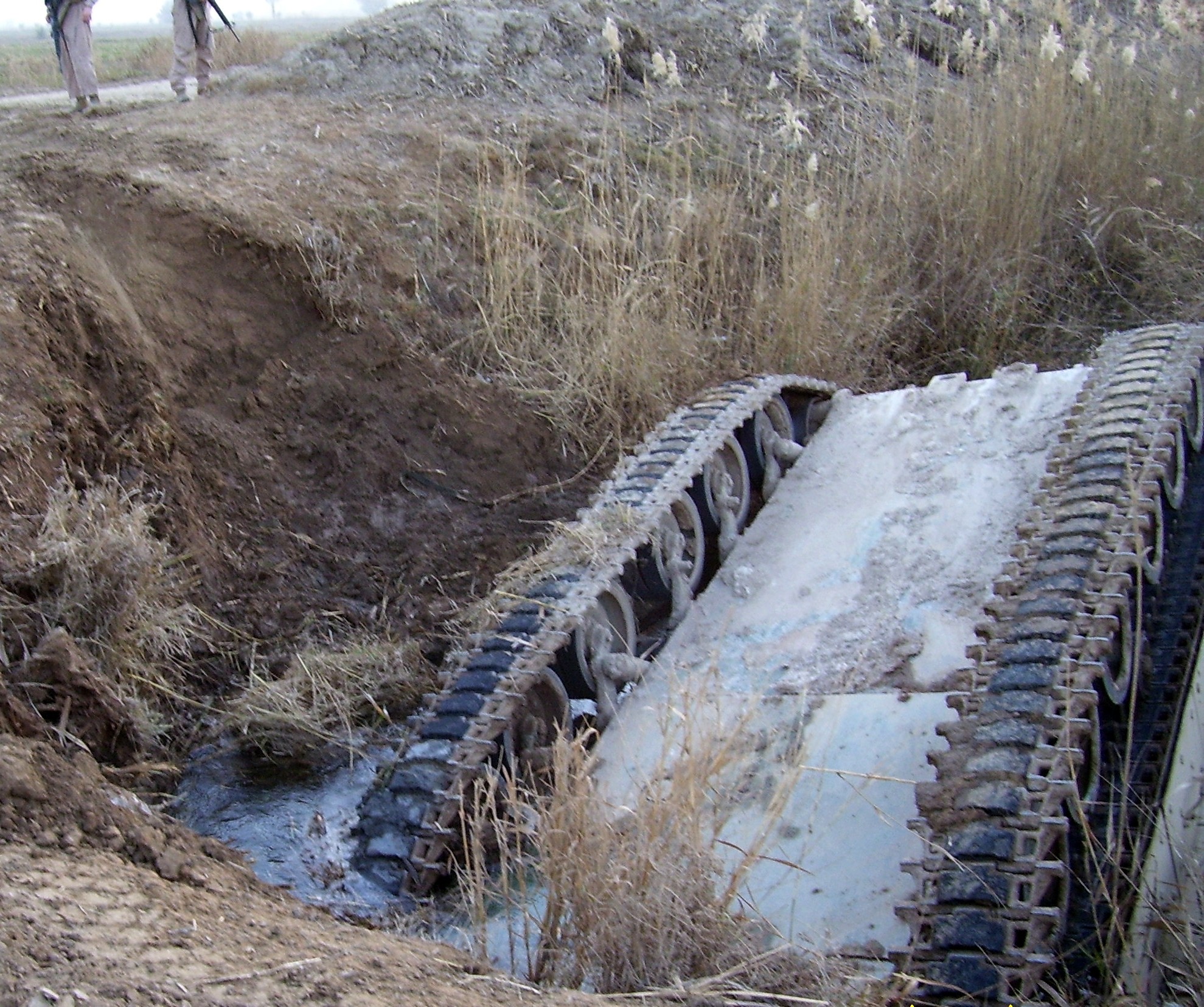FORT RUCKER, Ala. (Army News Service, Feb. 27, 2007) - Rollover drills and situational-awareness training turned a potentially deadly rollover into a survival story for three Soldiers recently when their Bradley fighting vehicle rolled into a canal in Iraq.
Staff Sgt. Logan Wallace, Spc. Mark Hoiland and Spc. Ray Ness - attached to Company B, 2nd Battalion, 136th Infantry Battalion, 34th Brigade Combat Team, of the Minnesota National Guard - were able to exit their vehicle after the bridge they were crossing gave way.
"When the road started to break away, causing us to slide into the canal, I yelled over the intercom system that we were sliding," said Ness, vehicle driver. "Spc. Hoiland then yelled 'rollover.'"
"We slid in and tipped upside down," said Hoiland, gunner. "The BFV hit the bottom and water filled the turret."
As water filled the vehicle, the three Soldiers immediately began helping each other escape.
"I was able to turn myself around upwards after the water filled the turret," said Hoiland. "I then yelled for Staff Sgt. Wallace and started pulling on him because he was still upside down."
"I was able to get down in the turret of the Bradley before we were upside down but was forced into the BC's hatch," said Wallace, Bradley commander. "I was face-first in the mud and water. I tried to get free and upright, but was stuck in the mud and my IBA (Interceptor Body Armor) was catching on something."
As Wallace continued struggling, Hoiland yanked on his IBA and pulled him upright. Meanwhile, Ness freed himself from the driver's seat and opened the gunner's door.
The driver and gunner of the Bradley following the Soldiers dove into the water to assist.
"The Soldiers knew the TTPs and procedures that helped save their lives," said Maj Michael Murray, battalion safety officer. "By placing the turret in the 12 o'clock position, part of the training and preparation to cross canals, it allows the Soldiers to get the door open. Otherwise it could be blocked. Additionally, the crew conducted their rollover drill as the vehicle entered the water. That is training saving lives."
Training and proper execution of TTPs also had the three Soldiers securing all of their equipment as part of pre-combat checks.
"This prevented the vehicle from being cluttered and having items hit the crew members as the vehicle overturned," said Murray. "The 'Hell hole' was clear, which allowed Ness to get out, as well as get back to open the door."
"Training rehearsals are just as important as the mission itself," said Capt. Chip Rankin, Co. B commander. "This event could have gone two ways - one being the worst day, where we lost three of our Soldiers, and the second being what occurred, our Soldiers successfully surviving. Training and engaging with your Soldiers always pays off."
"These Soldiers did everything right," Murray added.
Army statistics reveal that rollovers are decreasing. The service had an 82-percent reduction in rollover-related drowning fatalities between fiscal 2006 and 2005.
(Kelly Widener writes for the U.S. Army Combat Readiness Center.)


Social Sharing